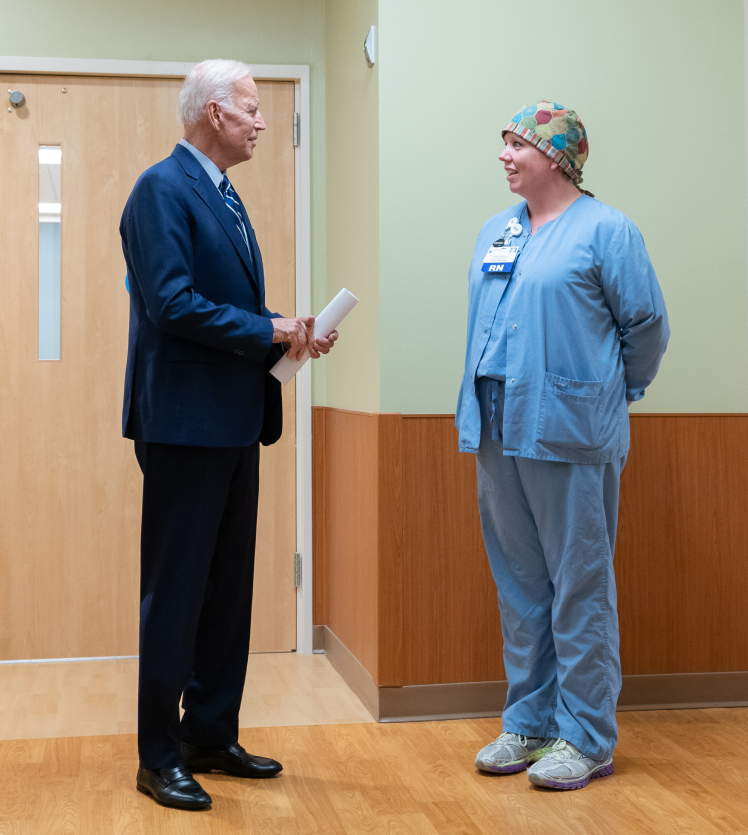The vast majority of clinicians, experts, and medical bodies agree that urodynamic studies (UDS) have real clinical value. However, certain clinical studies have questioned the efficacy of urodynamics for certain groups of patients with specific health conditions.
Many clinicians want to know: Does the data back up the commonly held idea that urodynamic studies are worth it to patients and providers? Are these diagnostic tools merely clarifying complex issues or punching above their weight by helping to deliver deep diagnostic value?
These questions are by no means simple. To find answers, we looked at a recent meta-analysis that's been making the rounds – Here's what we took away from the experience.
Read More
Topics:
urodynamics,
stress incontinence
Urodynamics is a panel of tests relating to the lower urinary tract. It is most commonly used in its entirety; however, it is also possible that one or more of the components will be performed separately if symptoms suggest this is necessary.
Urodynamics is the most reliable way to determine the cause of lower urinary tract symptoms and therefore, the best way to determine which treatment methods are most appropriate.
A Care Pathway is an evidenced-based framework to build a treatment plan upon, beginning with the primary physician, continuing to specialist referrals if necessary, and following the patient through to the end of their treatment (including follow-up care).
They typically follow a common path that starts with patient history, followed by clinical assessment, provisional diagnosis, first line management, specialist management, and follow-up care.
Some examples are listed here:
Read More
Topics:
Urodynamics Testing,
General Urology Information,
urodynamics,
urodynamics equipment,
urodynamics staffing,
urinariy incontinence,
urodynamics interpretation,
post-void residual,
stress incontinence,
urodynamics profitability,
urodynamics catheters,
UroGynecology,
Cystometrogram
When it comes to conditions of the lower urinary tract, there are key differences to consider in order to determine which form of testing is the most appropriate. While there are striking similarities between methods that can potentially create confusion upon first glance, a practitioner knows which test is most appropriate for the corresponding symptoms.
One area that has the potential to create this confusion is determining the difference between the need for the broader Urodynamics testing panel or the Cystometrogram. While these two procedures involve many of the same elements, they are in fact different.
This post will provide a detailed comparison of the two methods and describe how they are similar, but also different. First, a brief explanation of the two methods before we compare:
Read More
Topics:
Urodynamics Testing,
BHN,
outsourcing diagnostics,
urodynamics,
incontinence,
urodynamics service provider,
male urodynamics,
stress incontinence,
Uroflow,
Uroflowmetry,
UroGynecology,
Cystometrogram
An aging US population brings unique challenges to urologists and the urology workforce in general. As the average age of the population increases, this means that the frequency of urologic diseases and need for urology-related treatments also increases, and it is having an effect on the industry in general as demand increases. These demographic changes in the United States are in turn changing the demands on the urology workforce, creating a need by professionals to have the latest data, research, education, and advocacy for a changing industry.
With the findings published in the American Urology Association’s 2020 census, along with comparisons with their previous publications, we can form a clear picture of what the urology workforce and industry has been through in the past, what it is currently dealing with as of the 2020 publication, and we can also infer educated predictions about the future to anticipate what urologists and urology professionals will need to prepare for in order to meet the growing demand for urology care.
Here is a summary of some of the key findings of the AUA’s 2020 census:
Read More
Topics:
Urodynamics Testing,
urodynamics,
urodynamics staffing,
incontinence,
clinical operations,
urology,
urodynamics service provider,
Medical Practice Operations,
Uroflowmetry,
UroGynecology
Urinary incontinence can provide health care professionals with a challenge that may seem like it requires surgery when there are in fact a range of nonsurgical and even non-pharmacological options that can be employed first. To experienced urologists, this will be apparent, however other healthcare professionals who do not have a full working knowledge of urodynamic testing along with urinary incontinence treatment options may choose surgery or medication when there are many steps that can be taken and explored before resorting to more invasive options.
An Overview of Urinary Incontinence
Read More
Topics:
Urodynamics Testing,
urodynamics,
urinariy incontinence,
incontinence,
clinical operations,
urology,
urodynamics service provider,
male urodynamics,
UroGynecology
If you think you have been dealing with urinary incontinence, otherwise known as the involuntary loss of urine, you may be looking for a way to get tested. Testing for incontinence not only can confirm that you should be diagnosed, but it can also find the underlying causes and can lead you to treatment options. Today, we’re going to talk about urodynamics which is the main testing option for urinary incontinence.
Read More
Topics:
Urodynamics Testing,
urodynamics,
urinariy incontinence
When it comes to diagnosing patients right the first time, urologists, obstetricians, gynecologists, and healthcare professionals who want to improve the services they offer to patients all need to have access to the right testing options for diagnosing specific issues. The same is true when it comes to monitoring the health of the lower urinary system, with urodynamics being the only testing option specifically designed to monitor patient urinary health.
What Is Urodynamics?
Urodynamics refers specifically to the study of how the bladder, urethra, and associated sphincters in the body do their job of storing and releasing urine. Urodynamic testing therefore refers to the set of tests that provide healthcare professionals with valuable information on the health and function of a patient’s urinary system.
Read More
Topics:
Urodynamics Testing,
Reimbursement,
outsourcing diagnostics,
urodynamics,
urodynamics equipment,
urodynamics staffing,
clinical operations,
video urodynamics,
urodynamics interpretation,
urodynamics service provider,
post-void residual,
male urodynamics,
Pediatric Urodynamics,
Uroflowmetry,
urodynamics catheters,
UroGynecology
Urodynamic testing has the potential to provide health care professionals with much more detailed information on the health of their patient’s bladders, urethras, and their body’s ability to store and flush urine. Urodynamics, especially when used in rural health clinics, allows health care professionals to more accurately diagnose causes of urinary incontinence and other issues relating to the bladder and lower urinary system, making it a key service that needs to be integrated into RHC practices.
What Is Urodynamics?
Urodynamics along with urodynamic testing, in its simplest form, is the assessment of how the bladder, urethra, and associated sphincters do their job for storing and releasing urine from the body.
Read More
Topics:
Urodynamics Testing,
BHN,
Reimbursement,
outsourcing diagnostics,
urodynamics,
urodynamics equipment,
urodynamics training,
Reimbursment Trends,
urodynamics staffing,
clinical operations,
urodynamics service provider,
urodynamics billing,
Medical Practice Operations,
Uroflowmetry
2020 and 2021 have shown that urodynamics continues to grow and find unique and novel applications for diagnosing health issues relating to the bladder, urethra, and more. Here we have outlined 4 of the most interesting studies of the past year in the world of urodynamics:
Read More
Topics:
urodynamics,
urodynamics training,
urodynamics staffing,
incontinence,
urodynamics interpretation,
urodynamics service provider,
Urology Practice Trends,
UroGynecology
On January 20th of this year, Joe Biden was sworn in as the United States of America’s 46th president. Like any new leader of a country, this change in the White House meant many different things for various people, businesses, and entire industries.
The new administration is a tremendous shift from the previous one, changing the nation’s landscape across the board.
No more are these changes evident than in healthcare. Biden and his administration’s approach - even at first glance - is a totally different beast than former President Trump’s. With that said, how will this impact private practices across the US?
This blog will explore the above question and then delve into urology practices, specifically.
Read More
Topics:
Reimbursments,
urodynamics,
finance,
Reimbursment Trends,
Reimbursement Trends,
clinical operations,
urology,
urodynamics billing,
Medical Practice Operations











